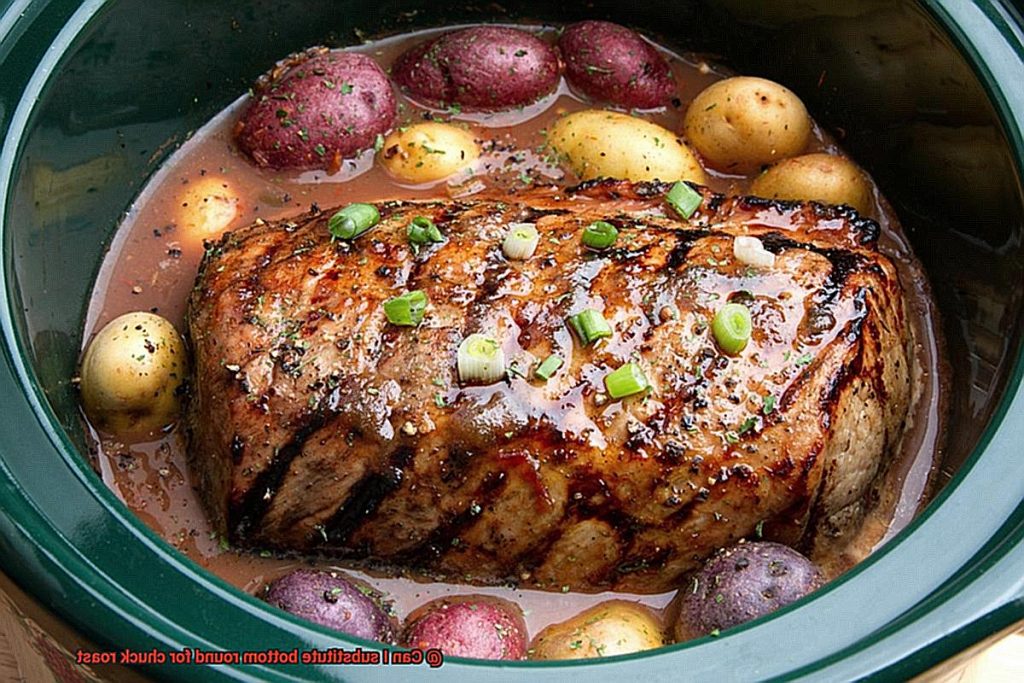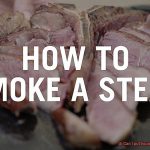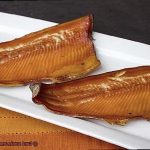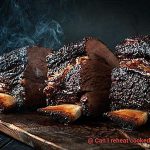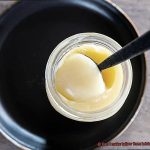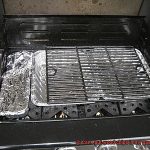Picture this: you’re in the midst of preparing a mouth-watering beef roast, only to realize that you don’t have the recommended cut. Panic sets in as you wonder if your entire meal is ruined. But wait. Before you throw in the towel, let’s explore a common question many home cooks ask themselves: Can I substitute bottom round for chuck roast?
While these two cuts may seem interchangeable, they each possess unique qualities that could impact the outcome of your dish. Chuck roast hails from the shoulder area of the cow, making it tougher but with plenty of marbling that enhances its flavor profile. Bottom round, on the other hand, comes from the hind leg and is leaner with less marbling.
But what does this mean for your recipe? Can you swap one cut for another without sacrificing taste and texture? The answer isn’t black and white; it depends on your specific recipe and cooking method.
In this blog post, we’ll delve into the differences between bottom round and chuck roast and uncover when and how to substitute them in your favorite beef dishes. So whether you’re whipping up a classic pot roast or experimenting with new flavors, sit tight as we guide you through everything you need to know about subbing one cut for another.
Contents
What is Bottom Round?
Well, it’s a lean cut of beef that comes from the hindquarters of a cow. It’s also known as rump roast or beef round, and it’s typically less expensive than other cuts like chuck roast. But don’t let its affordability fool you; this cut of meat is versatile and delicious when prepared correctly.
One thing to keep in mind about Bottom Round is that it can be tough if not cooked properly, due to its little marbling. However, with the right cooking method, it can be tender and full of flavor. This makes it best suited for slow-cooking methods like roasting or braising, which break down the tough fibers, leaving you with a mouthwatering result.
In addition to slow-cooking methods, Bottom Round can be used in many different dishes, including stews, pot roasts, and even beef jerky. You can also slice it thinly and use it for sandwiches or stir-fry dishes. Its versatility makes it a great option for those who love to experiment with different recipes.
But how does Bottom Round compare to Chuck Roast? Well, Chuck Roast comes from the shoulder area of the cow and has more fat marbling, making it a more tender cut of meat. This makes chuck roast great for braising, roasting, or grilling. It has a rich flavor that comes from its marbling and can be used in a variety of dishes.
If you’re considering using Bottom Round instead of Chuck Roast, there are some key differences to keep in mind. Substituting one for the other requires careful consideration. If you’re using Bottom Round instead of Chuck Roast, make sure to use a low and slow cooking method like braising or roasting to help break down the tough fibers and create a tender result. Additionally, consider adding some fat or moisture to the dish to prevent it from drying out.
What is Chuck Roast?
This popular choice comes from the shoulder of the cow and is favored for its rich, beefy flavor and tender texture. The high amount of connective tissue in this cut makes it perfect for slow cooking methods like roasting, braising, or stewing which results in melt-in-your-mouth goodness that will leave you wanting more.
When shopping for chuck roast, it is important to look for well-marbled meat with fat throughout. This not only adds flavor during cooking but also keeps the meat moist. Chuck roast is usually sold in large bone-in pieces or as boneless roasts. The bone-in version is commonly referred to as a “7-bone” roast due to its shoulder blade bone shape.
Chuck roast is a versatile cut that can be used in many different recipes including pot roast, beef stews, and shredded beef tacos. Its affordability should not fool you, however, with the right cooking techniques and seasonings, chuck roast can be transformed into a gourmet meal that will impress even the most discerning palates.
If you are unable to get your hands on chuck roast or are looking for a more affordable substitute, bottom round may be an option. However, keep in mind that bottom round lacks the marbling and tenderness of chuck roast. To prevent drying out, use low and slow cooking methods and consider adding fat or moisture.
Similarities Between Bottom Round and Chuck Roast
Then, you may have come across two popular beef cuts, bottom round and chuck roast. While they are often viewed as distinct cuts, there are some similarities between these two cuts that make them interchangeable in many dishes. As an expert on this topic, let me break down the similarities between bottom round and chuck roast for you.
Firstly, both bottom round and chuck roast come from the shoulder area of the cow, which means they share a similar texture and flavor profile. This also means that they can be used interchangeably in many recipes without significantly altering the final result. Additionally, both cuts contain a significant amount of connective tissue which can make them tough if not cooked properly.
Secondly, both cuts are relatively lean compared to other beef cuts. While this can be an advantage in terms of health benefits, it can also make them prone to drying out if overcooked. To avoid this, it’s important to cook both cuts low and slow, using moist heat methods like braising or stewing to break down the connective tissue and tenderize the meat.
Furthermore, both bottom round and chuck roast are versatile cuts that can be used in a wide range of recipes. From classic pot roast to beef stroganoff to tacos, both cuts work well in a variety of dishes. Here are some other similarities worth noting:
- Both cuts benefit from marinating before cooking to enhance their flavor.
- Both cuts can be sliced thinly for sandwiches or chopped for stir-fries.
- Both cuts are budget-friendly options for those looking to save money.
Differences Between Bottom Round and Chuck Roast
Although these two cuts come from different parts of the cow, they share similarities that can make them easily confused. However, understanding their differences is crucial to achieving the perfect dish.
Let’s start with the fat content. The bottom round roast is a lean cut with little marbling, which makes it less tender than the chuck roast. In contrast, the chuck roast has more fat and connective tissue, giving it a richer flavor and making it more tender when cooked correctly.
Now, when it comes to cooking methods, the bottom round roast is best suited for slow cooking methods like roasting or braising because of its toughness. It can also be sliced thinly for sandwiches or used to make beef jerky. The chuck roast, however, is a versatile cut that can be slow-cooked using various methods such as braising, roasting, or even grilling.
The flavor profiles of these two cuts are different as well. While both can be delicious when properly prepared, the higher fat content of the chuck roast gives it a richer flavor that some people prefer over the leaner bottom round roast.
In summary, there are significant differences between bottom round and chuck roast that affect their texture, flavor, and recommended cooking methods. Here is a list of their differences:
- Fat content: Bottom round roast is leaner with little to no marbling while chuck roast has more fat and connective tissue.
- Recommended cooking methods: Bottom round roast requires slow cooking methods like roasting or braising while chuck roast can be slow-cooked using various methods such as braising, roasting or grilling.
- Flavor: Chuck roast has a richer flavor due to its higher fat content.
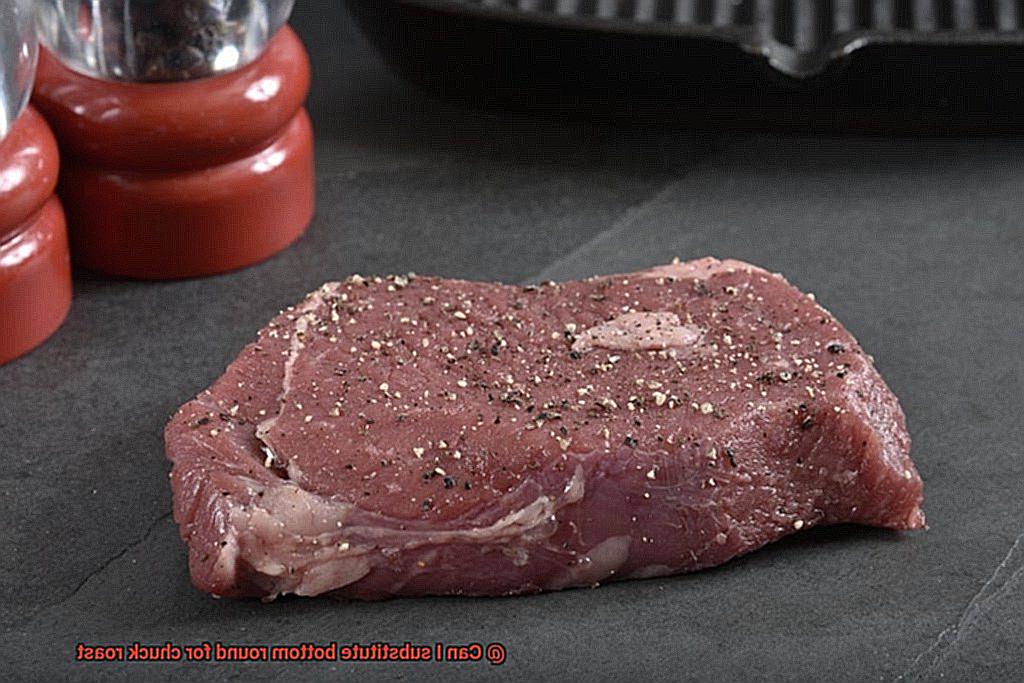
When to Use Bottom Round Instead of Chuck Roast
Choosing the right cut of beef can make all the difference in your dish. If you’re trying to decide between using bottom round or chuck roast, it’s important to consider the cooking method and desired outcome. As an expert on the topic, I’m here to guide you through when to use bottom round instead of chuck roast.
Let’s start with bottom round. This leaner cut of beef is ideal for dishes where you want a leaner protein, like beef stews or slow-cooked dishes where the meat will be shredded. However, it can be tough if not cooked properly. So, if you’re planning on using bottom round, make sure to cook it low and slow with plenty of liquid to keep it moist and tender.
On the other hand, chuck roast is a great choice if you’re looking for a more flavorful and tender cut of beef. Its higher fat content makes it perfect for pot roasts, braises, and other dishes where you want a rich, beefy flavor. Plus, the fat helps keep the meat moist and tender during cooking.
But what if you’re trying to cut back on calories or prefer a leaner protein? In this case, bottom round might be a better choice. It may be leaner but can still be delicious when cooked properly.
To summarize, here are some key points to consider:
- Bottom round is leaner and better for dishes where you want a leaner protein.
- Chuck roast is more flavorful and tender due to its higher fat content.
- If you’re after that classic pot roast flavor and melt-in-your-mouth texture, chuck roast is the way to go.
- If you’re trying to cut back on calories or prefer a leaner protein, bottom round might be a better choice.
- Ultimately, the decision between bottom round and chuck roast depends on your personal preferences and the specific recipe you’re making.
Tips for Substituting Bottom Round for Chuck Roast
If you’re looking to substitute bottom round for chuck roast in your recipe, there are a few things to keep in mind. These cuts of beef may seem similar, but there are some key differences that can affect the final result of your dish. Here are five tips to help you achieve success:
Understand the Differences Between the Cuts
Chuck roast is known for its rich flavor and tenderness, coming from the shoulder region of the cow. Bottom round, on the other hand, is leaner and tougher, coming from the rear leg. To make up for the difference in tenderness, it’s important to cook bottom round slowly and at a low temperature.
Cook Slowly
One popular method for cooking bottom round is to braise it in liquid, such as beef broth or red wine. This will help break down connective tissue and make the meat more tender. Slow cooking methods like stewing or pot roasting with plenty of liquid can also yield flavorful and juicy results.
Marinate the Meat
Marinating bottom round before cooking can add flavor and help tenderize the meat. A simple marinade of oil, vinegar, garlic, and herbs can go a long way in achieving this. It’s recommended to marinate the meat for at least a few hours or even overnight for maximum flavor infusion.
Use a Meat Thermometer
When grilling bottom round as a substitute for chuck roast, it’s important to monitor the internal temperature of the meat to avoid overcooking it and drying it out. Using a meat thermometer can help ensure that the meat reaches a safe internal temperature without compromising its tenderness and juiciness.
Adjust Your Expectations
While bottom round can be a great substitute for chuck roast, it may have slightly different flavors and textures. Some people describe it as tougher or chewier, while others appreciate its lean and beefy flavor. It’s important to keep this in mind and adjust your expectations accordingly.
Slow Cooking Methods for Bottom Round vs Chuck Roast
The choice of meat is crucial when it comes to achieving the perfect texture, tenderness, and flavor. Two popular cuts of beef used for slow cooking are bottom round and chuck roast. But which one should you choose?
Let’s start with bottom round. This lean cut of beef comes from the rear of the cow and has less marbling than chuck roast, making it potentially tougher if not cooked correctly. However, with the right cooking method, you can turn bottom round into a tender and flavorful dish.
One popular technique for cooking bottom round is braising. To braise the meat, sear it in a hot pan to create a crust, then simmer it in liquid, such as beef broth or red wine for several hours until it becomes tender and succulent. The liquid helps break down the tough fibers in the meat and infuses it with delicious flavors.
Chuck roast, on the other hand, is a more forgiving cut of meat when it comes to slow cooking. With its higher fat content and natural tenderness, it’s hard to go wrong with this cut. One popular method for cooking chuck roast is to use a slow cooker or crockpot.
Simply season the meat with salt, pepper, and any other desired spices or herbs, place it in the slow cooker with some liquid (such as beef broth or tomato sauce), and let it cook on low for several hours until it’s fall-apart tender.
So which cut should you choose? Here are some factors to consider:
- Texture: If you prefer a leaner cut of meat that requires more attention to technique, go for bottom round. If you want an easier option that’s naturally tender and juicy, choose chuck roast.
- Flavor: Bottom round can be just as flavorful as chuck roast when cooked correctly using braising techniques. However, chuck roast has a higher fat content and natural tenderness that lends itself well to slow cooking.
- Cooking time: Both cuts require several hours of slow cooking to achieve optimum tenderness. However, bottom round may take slightly longer due to its lower fat content.
Possible Disadvantages of Substituting Bottom Round for Chuck Roast
Although both bottom round and chuck roast are popular choices for slow-cooking, they are not always interchangeable. In this post, I will delve deeper into the possible disadvantages of substituting bottom round for chuck roast.
Firstly, it is crucial to note that bottom round tends to be leaner than chuck roast. This means that it may not be as tender or flavorful as its counterpart due to the absence of marbling throughout the meat. If you’re after that succulent and juicy texture that slow-cooked meat brings, chuck roast may be a better choice.
Another vital factor to consider is the connective tissue in the meat. Bottom round has more connective tissue than chuck roast, which can make it tougher if not cooked properly. To ensure that your dish doesn’t turn out chewy or dry, special attention must be paid to braising or cooking your meat.
Speaking of dryness, this is another possible disadvantage of using bottom round instead of chuck roast. Due to its lower fat content, bottom round can easily dry out if overcooked. This can result in an unappetizing final product that’s tough and challenging to chew.
Conclusion
In conclusion, the answer to whether you can swap bottom round for chuck roast is not a simple yes or no. These two beef cuts share some similarities but also have distinctive qualities that can affect your recipe’s outcome. Bottom round is a leaner cut that needs slow cooking to tenderize its tough fibers and produce a succulent result. Chuck roast, meanwhile, boasts more fat marbling, making it juicier and more flavorful.
If you’re thinking of substituting one cut for the other, keep in mind their differences in texture, taste, and recommended cooking methods. It’s crucial to understand these disparities to achieve the desired results. Adding some fat or moisture to your dish might be necessary when using bottom round instead of chuck roast to prevent it from drying out.
Ultimately, choosing between these two cuts depends on your preferences and the recipe you’re making. Both are versatile options that can work well with proper preparation and cooking techniques.
To sum up, deciding whether to go for bottom round or chuck roast hinges on your dish’s objectives.

